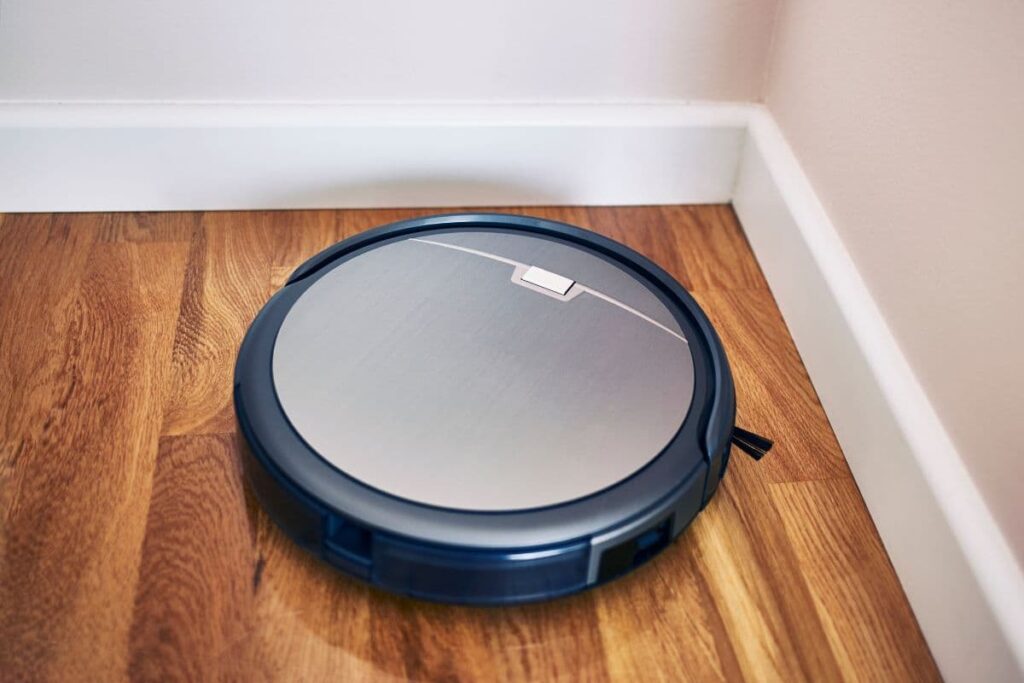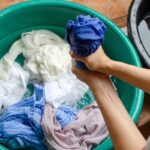Roombas are ranked as one of the top household robotic appliances, and with good reason. However, they often make an annoying sound when they are cleaning the house. How do you deal with that?
The squeaking sound in a Roomba comes from the friction between plastic and metal and is fixed with deep cleaning and lubrication. Roombas require regular maintenance to be efficient during their cleaning runs. Therefore, this sound means that the device isn’t maintained adequately.
If you’re wondering what to do with a Roomba that continuously makes an irritating screeching sound, read on as I tackle common causes and how to fix them.

Roomba Squeaking: Common Causes and Fixes
The basic items you’ll need throughout this upkeep process are:
- A screwdriver.
- A dry cleaning cloth (microfiber).
- Lubricant.
1. Inadequate Lubrication
The most common reason robotic cleaners squeak is they’re not properly lubricated. Like any other machine, Roombas need frequent lubrication on the following moving parts:
- The wheels.
- The roller ball.
- The roller brushes.
How Do You Oil a Squeaky Roomba?
You oil a squeaky Roomba by turning it upside down and applying lubricant on the axle of the wheels. Alternatively, if you want to do a deep clean in addition to the lubrication, you can use a screwdriver to disassemble the Roomba and oil the moving parts.
If you want an easy and effective lubrication process, follow the steps below.
- Turn the Roomba upside down to access its wheels.
- Locate the axle that’s accessible via a small hole on every wheel.
- Using the dry type of silicone lube, aim the tube into this hole and squirt once or twice. Dry lube is recommended as it won’t spill over into the other parts of the Roomba and cause wetness that attracts more dust.
- If you’re not sure which wheel is causing the noise, spray on both wheels. As you spray, rotate the wheels to ensure you effectively grease the axle.
2. Accumulation of Dirt in the Wheels and Rollers
Another major cause of a squeaking Roomba is the accumulation of dirt and debris in the wheels and rollers over time, making it hard for the Roomba to move and function as required.
How Do I Clean the Roller Ball on My Roomba?
You clean the roller ball on a Roomba by turning it upside down and dislodging the housing of the roller ball to expose any accumulated debris. Removing the axle will expose extra debris. Once you remove the waste, reassemble the parts, and the Roomba should work well without squeaking.
The Rollerball is the front caster wheel that gives the Roomba direction when cleaning. It often gets jammed with pet hairs and other debris, which hampers motion and produces the screeching sound.
The roller ball works jointly with the Roomba sensors that also need to be cared for, as they’re in charge of house mapping and other functions.
To clean the roller ball:
- Turn the Roomba upside down and apply a little pressure to the housing of the roller ball, which will make it snap right out. You should be able to see the waste immediately, more so if the roller couldn’t roll properly before.
- Remove the waste with your hands or a brush.
- Remove the pin/axle that’s in between the roller to remove extra debris. Apply a little pressure when pushing it from one end to another.
- Clean the axle thoroughly.
- Reassemble all the parts and carefully snap the rollerball’s housing back into place.
- Once you spin the roller ball, it should easily roll faster than before.
How Do I Change My Roomba Tires?
You change Roomba tires by flipping the machine, detaching its back plate, and using a screwdriver to detach the wheels. You then peel the tires off the wheels and replace them with the new wheels, after which you reassemble the Roomba.
Over time, the tires on your Roomba may wear out and need to be replaced to ensure effective household cleaning. The tires of your Roomba should have defined edges. Once these disappear, it’s time for a replacement. Follow these steps to change the tires:
- Flip the Roomba over and unscrew the entire back plate using a screwdriver.
- Unscrew the smaller screws located right by the tires. They are often about three.
- Detach the wheel from the Roomba.
- Use a flat-surfaced tool like a butter knife or flat-end screwdriver to peel off the tire from the wheel.
- Install the new tire by gently placing it over the wheel till it sits firmly around it.
- Repeat steps two to five for the second wheel.
- Screw back the wheels into the Roomba and then screw the back plate back on.
How To Clean/Replace the Roller Brushes
Another essential part of the Roomba is the two roller brushes that attract a lot of waste when cleaning.
- Flip the Roomba to access the roller brushes.
- Move the button at the top of the roller casing slightly to the right to pop the lever up.
- Carefully remove one roller from the casing at a time. You should see hairs stuck to the sides of the brushes.
- Use your fingers to retrieve the debris and discard it. If the hairs are too far inside, use a sharp object.
- Repeat the process for the second roller.
- Use a dry microfiber cloth to clean the casing where the rollers sit. If it’s too dirty, it’s advisable to use a wet wipe.
- Wait for the casing to dry, then gently place the rollers back.
- To clean the spinning brush, use the screwdriver to unfasten one screw, and it will pop off.
- Clean the spinning brush, clearing all refuse, then replace it.
Just like the tires, these roller brushes get worn out, which can be seen when the edges are no longer defined.
Once you have gone through all the above steps and your Roomba is still making a squeaking sound, take it to the manufacturer or a hardware store and have a professional look at it.
There’s an optimal cleaning schedule for Roombas as elaborated here.
Conclusion
Roombas are more efficient at cleaning than traditional vacuum cleaners. However, to get the best cleaning results, you must pay close attention to their maintenance and cleaning patterns.
Also important to note is that you shouldn’t use water while cleaning your Roomba, as these machines don’t respond well to liquids. Instead, use air-dry lubricants or wet wipes that immediately dry after application.





